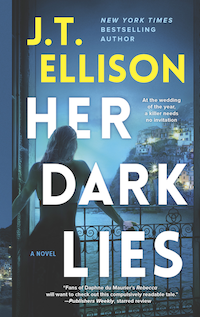Watching the Preakness Stakes last weekend, I was nauseated and on the verge of tears when the phenomenal colt, Barbaro, pulled up lame at the start of the race, his right-rear ankle swinging in grotesque circles.
I know I wasn’t alone; the country has been following the story of this magnificent animal – broken, battered, with an injury that would be the end of a lesser horse. After many hours of surgery, and many dollars, Barbaro, the horse they should rename Braveheart, seems to be on the mend. A wonderful ending to a bitter story.
Later that day, Hubby and I were in the car, listening to a sports talk radio program. Barbaro, and horse racing in general, was the topic of conversation. The hosts were deriding the age old-claim that the Kentucky Derby is “The Most Exciting Two Minutes In Sports.” They questioned how a horse race could be more exciting that a two-minute drill in the Superbowl, or the last two minutes of a hockey game, when goalies are pulled to improve the team’s chance of scoring, and the already frenetic pace becomes almost chaotic.
I think they missed the point.
Horse racing is billed that way appropriately, simply because the entire event takes place in two minutes. You wait around all day, partying, betting, letting the anticipation build and build and build, then suddenly they’re off, and the entire day comes to a climax in two short minutes.
What does this have to do with writing, you ask? Simple.
I was thinking about how fans approach their sports, that the final two minutes are the most important and exciting because it completely captures their interest.
I realized that I approach reading the same way.
If you don’t capture my attention within the first two minutes, you’re sunk.
Now, I’m a fast reader, and I can get 10–15 pages into a book in two minutes. And if you haven’t shown me something by then, I’m going to be a little cranky.
Last week, one of the lists I participate in had a discussion about where to have the first murder. Does it have to be on the first page, the first chapter, within the first fifty pages? Would it be okay to build the characters, or romance, or whatever, before your murder appears?
In my humble opinion, no. That’s not okay.
You have two minutes to get the attention of your reader. Only very few, exceptionally talented writers can write a mystery in which the murder doesn’t take place until later in the book. And even if you’ve got the talent of, say, Laura Lippman, it’s hard to do. You’re stretching your reader’s faith when you don’t give them a reason to continue reading.
I think this rule applies to all genres, but especially to mystery.
How many books have you picked up, read the first couple of pages and gone, Hmmm, I forgot to put the clothes in the dryer. You do a few chores, come back to it, read a couple of pages and realize you'd really like some Starbucks.
I have read so many books like this, and it drives me crazy. Without realizing it, I’m finding other, mundane things to do instead of buckling down and reading. For shame. I want to be so engaged I have to drag myself away to feed Hubby, not decide that cleaning the bathroom is a better option than finishing out a chapter.
So how do you capture the interest of your readers in two short minutes?
With a sharp, strong voice, an engaging style, and starting the action and story immediately, rather than spending a chapter describing your character’s morning or looks.
I try to do this with my own books. I either start with a body being found, or a murder being committed. It's a great way to kickstart your story, set the tone, and assure your readers that you aren't going to waste their time making them wonder what this book is going to be about.
I decided to go back and see which writers I think really do this well. John Connolly begins his debut novel, EVERY DEAD THING, with a flashback to the protagonist’s literal nightmare: the horrific murder of his wife and daughter. Compelling and gripping, he uses the crime scene reports to fill in the details. This spare style resonates, drawing the reader into the story almost against their will. It’s brilliant. And shoot, I just lost fifteen minutes because he sucks me in, time and again.
I've learned that sometimes, it's better to learn by example from the masters.
John Sandford often starts his novels with the killer’s point of view. Duane Swierczynski opens THE WHEELMAN with a bank robbery going awry. The first line of the prologue in Tami Hoag’s NIGHT SINS is “They found the body today.” P.J. Parrish begins A KILLING RAIN with an anonymous man driving Alligator Alley to deliver a package. The tone of the story is unmistakable; you know right away that he’s up to no good. And don't even get me started on how well Cornelia Read opens her debut, A FIELD OF DARKNESS. Just go out and get it.
Wham, Bam, Thank you, Ma’am.
All of these great books have one thing in common: they grab your attention immediately.
Don’t worry so much about where you drop the body. Worry about engaging your reader with an appropriately dramatic opening.
If you can capture your reader’s attention within the first two minutes, you’ll always be better off in the long run.







